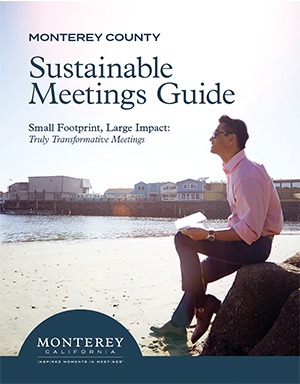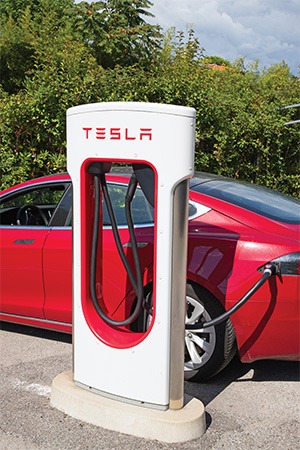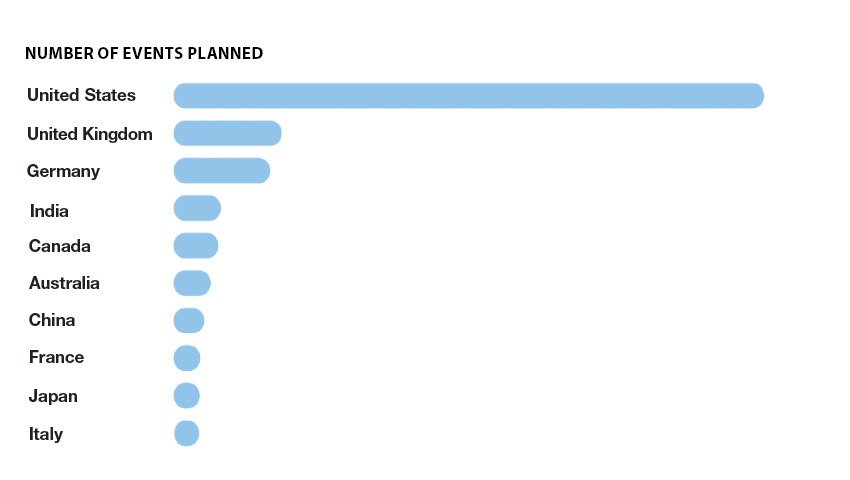How CVBs can guide you to ‘regenerative’ meetings
As a kid, I was into scouting. It was where I was taught to travel. One of the first things both Girl Scouts and Boy Scouts learn is the principle of Leave No Trace. It meant you left your destination, typically a campsite, exactly as you found it. Undisturbed. Natural.
In today’s “meetingsverse,” that could mean a zero-waste event, for example. Which is great, but is it good enough? Pre- and post-event surveys consistently tell us that attendees in the post-Covid era (if we can really call it that) want their travel to matter, to be worth the effort and, most of all—to tweak the scouting maxim—to Leave a Positive Trace.
There’s a word that’s trending for this: regenerative. Regenerative meetings, regardless of their actual program content, offer attendees and meeting sponsors the opportunity to make a meaningful contribution to the destination.
But adding this extra facet to your planning puts extra burden on you. It means finding all the additional resources you may need in unfamiliar territory.
“Regenerative meetings offer attendees and meeting sponsors the opportunity to make a meaningful contribution to the destination.”
The good news is, you have an ally. The convention and visitors bureau (CVB) or destination marketing organization (DMO) in your meeting destination stands ready to accelerate the gathering’s impact from “Were we really there?” to “This is a better place because we arrived.”
Not Your Father’s CVB
Misperceptions still linger about what CVBs do. Or, to put it a little differently, about how they can best be harnessed for successful planning. Indeed, some research indicates that younger meeting professionals, in particular, have a bias toward event tech for venue and resource sourcing in lieu of utilizing the always-free services a CVB can provide.
Historically, the CVB’s value proposition was skewed heavily to destination marketing. It continues to assist planners in this, to attract registrants by convincing them on multiple platforms that attending won’t be all work and no play. You can spend hours researching this online yourself, but CVBs offer a more streamlined way to plan any size event. They’re on the ground, the local experts, with comprehensive contacts and relationships with hotels, event spaces, fully vetted service providers and more.
Of course, they can help with logistics such as site selection, transportation, and finding hotels and meeting spaces, but their value extends far beyond just space, rates and dates. They are on a first-name basis with the local power structure and thought leaders, so if you want the mayor to drop by and welcome your group, just ask. They can point you to hidden gems in emerging neighborhoods. Who better to suggest local themes and one-of-a-kind experiences?
Don Welsh, president and CEO of Destinations International (DI), likes to put it this way: “The destination organization’s role has evolved dramatically in recent years, and it goes far beyond marketing. We are now destination architects, imaginers, culture cultivators and project engineers—as well as clever marketers.”
Welsh, whose own CVB experience started in Chicago, then continued in Indianapolis and Seattle, professes bewilderment that any planner would ignore the complementary services they provide, especially since “many meeting professionals don’t have the same resources they had prepandemic.”
He also underscores yet another major reason why CVBs today are motivated to help planners host regenerative meetings. For nearly five years now, DI has been advocating among its CVB and DMO members that their ultimate success should not be measured by “heads in beds,” but by how well they serve their communities. The thinking is, if they can help their cities become better places to live and work, more meetings and tourists will come.
In short, when CVBs help facilitate regenerative activities within their cities, they are serving their key customers—local residents.
Buycott Instead of Boycott
Sometimes, today’s headlines overshadow all the destination marketing any CVB can do. Earlier this year, for example, the NAACP, the League of Latin American Citizens, the Florida Immigrant Coalition and Equality Florida, a civil rights organization advocating for the LGBTQ+ community, all made news by issuing travel advisories warning of risks to personal safety when traveling to the Sunshine State.
This begs the question, can the best way to make a positive impact on a destination ever be to stay away? To vote with your dollars by boycotting a destination that happens to be located where local laws or leaders do not align with your own core values or those of your client and potential attendees?
Despite their warnings, groups like Equality Florida are not demanding boycotts, however. In a statement posted on its website, that organization instead urges that visitors “consider how you can engage more deeply in the fight against the state’s all-out assaults on democracy and freedom.”
After all, the hotels, convention centers and other visitor attractions, and all the workers and local economies they help to support, have not created the climate that social justice voices are warning against.
That’s where SocialOffset comes in.
Flashback to 2019. Elena Gerstmann, FASAE, CAE, was hungry. The only open option at the airport she was passing through on her way home from a business trip was a restaurant she had boycotted for years because of its anti-LGBTQ+ financial support. Begrudgingly, she bought a sandwich, then stewed over how much of her tab could land in the hands of someone actively working against what she believes in.
She thought, wouldn’t it be great if there was a way to help people donate money to rebalance their spending?
That thought lingered until last year, when Gerstmann’s wife, Beth Surmont, FASAE, CMP-Fellow, CAE, was about to attend a conference in a state “that had recently put forward harmful anti-LGBTQ+ policy.” Surmont thought about boycotting the event until the two of them came up with the idea of making a donation to offset the impact of her spending in the state instead.
Not long thereafter, they cofounded SocialOffset—the prototype launched at ASAE Annual Meeting in August 2022 and the pilot soft launch was this past January—a nonprofit that provides a socially conscious alternative to event and destination boycotts. Its website describes SocialOffset’s brief this way: “We are a community of people determined to stay true to our values when we travel to or host events. We help event attendees and business travelers offset spending in destinations whose laws do not align with their core values by making it easy to donate to local charities that do.”
Gerstmann, who serves as president and CEO of the organization, adds: “We know that attendees and exhibitors are conflicted between needing to engage with their professional and industry networks and not wanting to support states that have enacted restrictive legislation targeted at specific groups. SocialOffset gives everyone involved a third way. At its most basic level, SocialOffset says ‘no’ to event boycotts and ‘yes’ to making a difference.”
Offering event attendees peace of mind via an option to donate to bettering the destinations they visit, Gerstmann says, tells them their meeting hosts “know that they understand their concerns.”
Founding CVB/DMO partners of SocialOffset were Visit Seattle, Visit Austin, Nashville Music City and Visit Baltimore. Additional sponsorships to date have come from Birmingham, Alabama; Dallas; and Orlando, Florida, as well as Destinations International.
The process begins with SocialOffset vetting local nonprofits and charities making an impact. Event organizers select the cause(s) to be offered from those SocialOffset has endorsed, then promote a custom web page on which to make offset donations. To cover the campaign costs, SocialOffset charges a flat fee of $750 for nonprofits including associations and $1,500 for for-profit corporations and other businesses. The SocialOffset website also states: “As part of our commitment to inclusion, please let us know if this fee will be a barrier so we can discuss.”
Gerstmann says her organization is currently working with more than 40 different associations to create their own SocialOffset page.
She continues: “We are very proud of the fact that 100% of the funds donated by meeting attendees are donated to one or more vetted, local nonprofits that deliver programs, services and advocacy for racial justice, LGBTQ+ equality, hunger relief, housing security, environmental sustainability and reproductive freedom.”
In a statement issued about travel to Florida, Gerstmann and her team cite Lynn Minnaert, academic director and a clinical associate professor at New York University, who says travel boycotts are not effective at achieving political change, noting that “turning away from something doesn’t necessarily make it go away.”
The SocialOffset statement concluded: “By visiting locations that have policies many of us disagree with, and making donations, we can provide vital support to mayors, community organizers and local activists who work tirelessly to bring about positive change. Staying home doesn’t always help; supporting does.”
In short, buycott, don’t boycott.
Sustainability Sells
 Meetings can become regenerative in many ways. But none is more impactful than a commitment to KPIs of sustainability. Today’s meeting goers want it, destinations benefit from it. Promoting the sustainability of a meeting or event is a proven selling point to boost attendance and, increasingly, for a bigger welcome mat from the local community.
Meetings can become regenerative in many ways. But none is more impactful than a commitment to KPIs of sustainability. Today’s meeting goers want it, destinations benefit from it. Promoting the sustainability of a meeting or event is a proven selling point to boost attendance and, increasingly, for a bigger welcome mat from the local community.
No local clearinghouse of qualified suppliers and sustainability experts can outmatch the CVB.
“When CVBs help facilitate regenerative activities within their cities, they are serving their key customers—local residents.”
Some CVBs have made sustainability a central tenet of their brand. Since 2020, for instance, Monterey County CVB (See Monterey) on California’s Central Coast has offered a downloadable “Sustainable Meetings Guide: Small Footprint, Large Impact for Truly Transformative Meetings.” Its “partner pages” detail the green practices and eco-awards of area meeting spaces, hotels and venues like Monterey Bay Aquarium. The guide also promotes the CVB’s sustainable resources, including zero waste event services; carbon offset programs; swag, tchotchke and signage repurposing; and local and sustainable F&B sourcing.
Visit Virginia Beach is a supporting partner of Virginia Green, that state’s initiative to encourage green tourism practices. Certified Virginia Green Travel Partners make commitments “to reduce their generation of wastes, reduce their use of water and energy, and embrace other sustainable practices,” and visiting groups can reduce their environmental footprint by supporting these businesses, which are listed on the CVB’s website.
To get your attendees’ boots in the mud, the CVB can help set up more hands-on activities along the area’s coastline and waterways and diverse marine wildlife with groups like the Chesapeake Bay Foundation.
Overtourism has come to the forefront of the sustainability issues facing iconic destinations in this country and around the globe. Here, too, CVBs have guidance to offer. One example: On its website, Utah’s Park City Chamber and Visitor’s Bureau describes in considerable detail a Sustainable Tourism Plan developed for the city and surrounding Summit County in 2022. Among its stewardship principles: “Enable Summit County’s tourism industry to lead by example, championing tourism’s benefits, mitigating its impacts, and harnessing its regenerative power for the community and the environment.”
Hands-on CSR

Virginia Green’s website to reduce environmental
footprint
CSR and voluntourism-like activities are the very essence of regenerative. Not only do they contribute to a memorable attendee experience, they also are a measurable benefit for local communities that welcome donated surpluses of F&B, educational materials and scholarships for those who otherwise couldn’t afford to attend the meeting. It’s become commonplace for doctors and other medical professionals attending conferences to do volunteer work in the community while they’re in town.
“These kinds of things are becoming part of the RFP,” Welsh notes.
And as Meetings Michigan, which counts nearly a dozen destinations in that state within its network, points out, “Most CVBs are membership and category driven; meaning they have members in every area you can think of for your event…If your group wishes to collect food for the local pantry, spend a half-day on a service project or contribute to a local nonprofit cause, all of this can be orchestrated through the CVB.”
Two more illustrations from among the many that can be cited:
Discover Atlanta promotes its city as “the heart of the American civil rights movement and…a city that likes to give back to the community. Corporations and small businesses in Atlanta build community engagement into their business models. Likewise, Atlanta’s varied and many nonprofit organizations welcome groups coming to Atlanta for meetings and conferences to contribute through donations or hands-on opportunities.”
Its Atlanta Community Engagement partners range from well-known groups like Atlanta Habitat for Humanity, where each year some 13,000 volunteers work alongside more than 100 new families to build, renovate, repair and paint homes, to Hands On Atlanta, which works to make Atlanta “the most civically engaged and equitable community in the world” by tackling pressing needs like food insecurity. From plug-and-play group volunteering opportunities to creating completely customizable civic engagement experiences for convention attendees, the organization offers fun and impacting solutions “to do something good.”
Destination Vancouver, which serves that city in Canada’s British Columbia, promotes several CSR activities, including The Stanley Park Eco-Stewards Program, where your group can remove invasive species, restore degraded habitats, plant native species, decommission unsanctioned trails and other enhancements.
“The MICE market, whether it’s a meeting of 700 or 7,000, is important to CVBs,” Welsh says. Even more so regenerative meetings, because of the social as well as economic benefits for the destinations they serve.
Travel Matters
Business conferences are back in the United States
We don’t have to tell you twice that companies are sending people back on airplanes again, ballrooms are full and available dates are getting harder to find. Brand USA reported at the IPW 2023 conference in San Antonio, Texas, that air connectivity is expected to be back to 2019 levels by the end of the year. “Pent-up demand continues to drive economic recovery in communities throughout the country as more and more people are now booking travel and living out their dreams,” said Brand USA President and CEO Christ Thompson.

What sets the United States apart is the diversity of our geography, the diversity of our experiences, the diversity of our people, and one-of-a-kind pop culture, he said. “How did you first come to know the United States? Were you on the road with Jack Kerouac, walking the line with Johnny Cash, or having breakfast with Audrey Hepburn at Tiffany’s? Regardless, I bet you were left with a dream, an idea, and an intangible excitement, and you knew you just had to experience it all for yourself.”
Some of those, most likely, also became acquainted with the cuisine, culture and cities of the country through events. According to statista.com, the United States hosted the most conferences and trade shows of any country in the world by far. As of August, 41,156 events had been planned this year in America through the event platform 10times.com compared to 7,570 in the United Kingdom and 6,732 in Germany, the next two in line.
“I bet you were left with a dream, an idea, and an intangible excitement, and you knew you just had to experience it all for yourself.”
— Chris Thompson
Those are even more powerful numbers when you consider the compounding impact of bringing people together in new places. “Meetings lead the way for creativity and inspire change,” explained Julie Coker, president and CEO of San Diego Tourism Authority and former Meetings Mean Business co-chair. “Beyond economic impact, meetings drive social change, human connection and mental health. The importance of meetings is vast,” she stressed.




